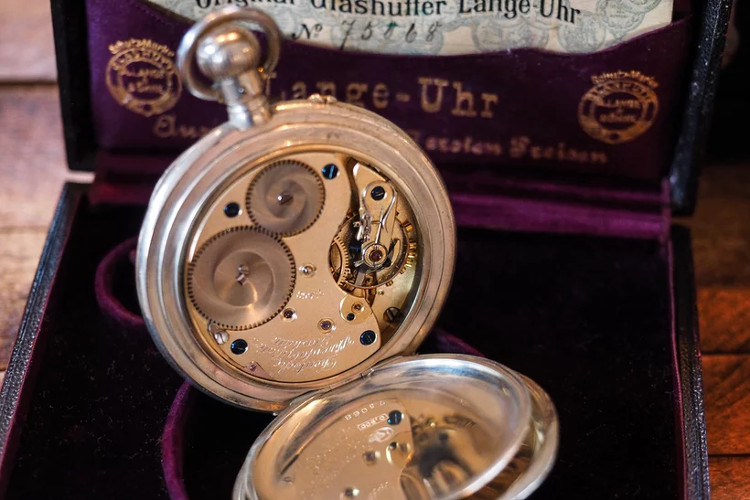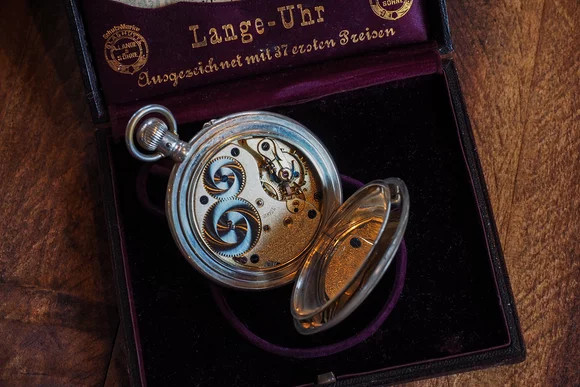What is the accuracy of the clock, and is anyone really interested in it?
And is it like what you think?
Accuracy: What it aims to is the reason for the watch to exist. Throw away everything that shapes the clock - an expression of personality and style; collection; jewelry; The most subtle thing in mechanics - and what you have is a machine made to keep time accurate.
So what exactly is it, though, it will not be as simple as you think, and with atomic clocks present almost everywhere, there will still be lots of good things - if you are careful. Clockwork is something you care about - to look at the most essential feature, but surprisingly little is discussed, of the clock.

What it aims to is the reason for the watch to exist.
Accuracy with most people has only one meaning: a watch can keep time accurate with whatever we are using as a time standard. Overall, now, it's time on the phone; Can also be on a smart watch. If the clock hour always matches the time standard (the time on your phone is taken from the Internet through an atomic clock), we will say that the clock is correct.
Of course, there is no perfect mechanical clock, and we often decide whether our watch is accurate enough for our needs in an unscientific way: by looking at how dissatisfied we are. with its inaccuracy.

Lange & Söhne's pocket watch.
The watch used with the purpose illustrated here is a Lange & Söhne pocket watch, which is chosen by the way it was created illustrating a key point: the purpose of making watches Accurate, surprising, and not the achievement of accuracy. Of course, accuracy is always important, but it is the result of something much more fundamental: the stability of frequency. Simply put, a clock always evaluates a constant beat for a certain period of time. A clock with a stable frequency is an accurate clock.
The difference between accuracy and frequency stability can be illustrated by thinking about an unstable clock: one day you deviate by +6 seconds, the day after -10, the next day -2, the second day +7, day after -1. And after five days, you only deviate from the standard time a second, and you think your watch is correct. However, in fact, you have a very inaccurate thing, and you're basically lucky,
Every time machine is based on an oscillator - it can be a pendulum, a shake and a spring, or maybe a quartz crystal controlled by tiny currents - the more stable the oscillator then, the time machine will be more accurate. A classic example is a marine watch.

The picture above is the heart of Lange's high-end pocket watch.
Maritime watches will be taken very carefully before being taken on board, and people always expect stability, not its accuracy. If the watch is always running fast for five seconds a day, it will not change, you will easily calculate the time at Greenwich to be able to locate a point based on astronomical observation.
The picture above is the heart of Lange's high-end pocket watch. In fact, it is a very accurate clock, but most of what you see, to say correctly, is to ensure the stability of frequency. The reason for having ruby glass legs is because of the shafts of steel wheels, when steel and ruby are almost frictionless bearings; this keeps the frequency unchanged when the energy of the winding wire changes (larger friction will make the wheel's amplitude more sensitive to changes in energy).
The shaker springs will make the shakes less sensitive to changes in energy; Balancing filament will cause the amplitude of the shaking wheel - or further, frequency - to fluctuate less with changes in position.
The wheel itself, you can see, is a round sandwich of steel and brass; Their diameter will change when the temperature changes, to compensate for the thermal effect on the spring wheel, to increase the stability of the frequency. The only component that affects the accuracy most, not the stability, is the gooseneck regulator - it is used to change the position of the needle, in the middle of the coil where the outer coil of the spring is located. The cake runs through.

The figure above is the exit gear of a pendulum clock.
The position of the needle tip determines the effective length of the spring wheel spring; to keep the clock accurate compared to a reference kit (atomic clock) you will need to adjust the clock, and that is obviously the last step to keep the watch accurate.
Another problem of the shakes: its size and mass. The frequency stability of an oscillator operates based on two things: mass, and frequency. Increase either of them, or both, basically, you will have a more stable frequency. The figure above is the exit gear of a pendulum clock; With pendulum clocks, the general approach is to use an extremely large oscillator to swing back and forth with a low cycle.
In the centuries-old history of watch technology, you always have to use the largest possible shaker for an apparatus, but from the 20th century to the present, gradually shift to using frequency shakes. Higher (28,800 vph has gradually become standard, going up from 18,000 vph popular on most 19th century pocket watches). Such things are all about pushing things further.

The image above is a machine of a Senfine watch.
The picture above is a machine of a Senfine watch, with Genequand escaping cake. The oscillator has a very special design and material and it vibrates at 115,200 vph (16 hertz, making it possible to store up to 70 days in theory).
When the frequency increases, of course, the volume must be reduced. Quartz watches still have mechanical oscillators (we often forget this) but the volume is usually very small and the corresponding frequency will be higher; The usual frequency for a quartz watch is 32,768 hertz, and that high frequency is the reason why quartz beat the mechanical watch on the accuracy before the race has not yet begun.
Atomic clocks use the resonant frequency of, usually, a cesium atom, ie 9,192,631,770 hert (the frequency of radiation emitted when the atom changes between two energy states).

When talking about accuracy, the way you understand it is just as interesting as getting it.
So who cares about accuracy? Of course, I always care. But when it comes to accuracy, the way you understand it is just as interesting as getting it. Apple Watch, for example, uses a thermal compensator quartz set (TCXO), which is used on high-end quartz machines like Breitling's SuperQuartz or Grand Seiko's Seiko 9f series, to update the internal clock of it. But, there is no human hand behind that accuracy, at least directly - that watch takes time from the phone, which takes time from an Internet protocol, from a system of servers. , which takes time from GPS satellites to atomic clocks.
Lange has shown from history, that by actually using the watch and being careful in editing and calibration, the time of the watch can be kept at a change of less than a second per day, above all everything comes from the eyes and hands of the artists making watches.
Exact mechanical clocks now do not require the same skills as before (now there is no one out there to calibrate the heat shakes by hand every day anymore) but many techniques needed to create Lange in history still always exists with us - another aspect of mechanical watches that makes them still and will always be passions.
- America invented the world's most accurate watch
- The inventions help see the time before the clock
- Alarm clock history
- Intelligent alarm clock
- Clock Plus 1.5e: Versatile electronic clock
- Discharge alarm clock
- The new clock corrects the timing
- Mechanism of operation of mechanical watches
- The device is more accurate than an atomic clock
- Will the clock be only one 120 seconds wrong for 14 billion years?
- 11 interesting things you can know about the Big Ben clock tower
- Smart Watch Microsoft is ready
 'Fine laughs' - Scary and painful torture in ancient times
'Fine laughs' - Scary and painful torture in ancient times The sequence of numbers 142857 of the Egyptian pyramids is known as the strangest number in the world - Why?
The sequence of numbers 142857 of the Egyptian pyramids is known as the strangest number in the world - Why? History of the iron
History of the iron What is alum?
What is alum? Without diamonds or gemstones, this watch still costs nearly 6 billion VND, listed in Guinness for its unique record
Without diamonds or gemstones, this watch still costs nearly 6 billion VND, listed in Guinness for its unique record  Record selling price for the gold watch of the richest passenger on the Titanic
Record selling price for the gold watch of the richest passenger on the Titanic  The oldest working clock in the world
The oldest working clock in the world  The most complex 500 billion watch on the planet and the curse make everyone afraid
The most complex 500 billion watch on the planet and the curse make everyone afraid  The watch was so accurate that it did not deviate from time for 40 million years
The watch was so accurate that it did not deviate from time for 40 million years 